Mechanical Hub Media attended the World of Concrete (WOC) trade show in Las Vegas this week has been an enlightening experience, offering a comprehensive view of the latest advancements and trends in the concrete and masonry industries. Not too mention, it’s the show to see all the power tool manufacuters in one place, with their Read more
Industry Blogs
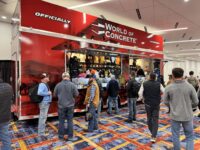
Mechanical Hub Media attended the World of Concrete (WOC) trade show in Las Vegas this week has been an enlightening experience, offering a comprehensive view of the latest advancements and trends in the concrete and masonry industries. Not too mention, it’s the show to see all the power tool manufacuters in one place, with their new product launches.
Held at the Las Vegas Convention Center from January 20 to 23, 2025, WOC 2025 marked its 51st anniversary, solidifying its reputation as the premier international event dedicated to these sectors.

Event Overview
The event is structured into two main components:
- Education Sessions (January 20-23): These sessions provided in-depth knowledge on various topics, including new technologies, safety protocols, and business strategies. Industry experts led seminars and workshops, fostering a collaborative learning environment.
- Exhibits (January 21-23): The exhibition halls were bustling with over 1,500 exhibitors showcasing innovative products and services. From cutting-edge machinery to sustainable materials, the exhibits offered a glimpse into the future of the industry.

Key Highlights
- Innovative Product Launches: Many companies unveiled new products designed to enhance efficiency and sustainability. For instance, advancements in concrete admixtures promise to improve durability while reducing environmental impact.
- Live Demonstrations: The outdoor exhibit areas featured live demonstrations of equipment and techniques. Witnessing these applications in real-time provided practical insights into their benefits and implementation.
- Networking Opportunities: WOC facilitated connections among professionals from around the globe. Various networking events allowed attendees to exchange ideas, discuss challenges, and explore potential collaborations.
- Educational Seminars: Topics ranged from the integration of digital technologies in construction to the latest safety standards. These sessions were instrumental in broadening understanding and staying updated with industry best practices.
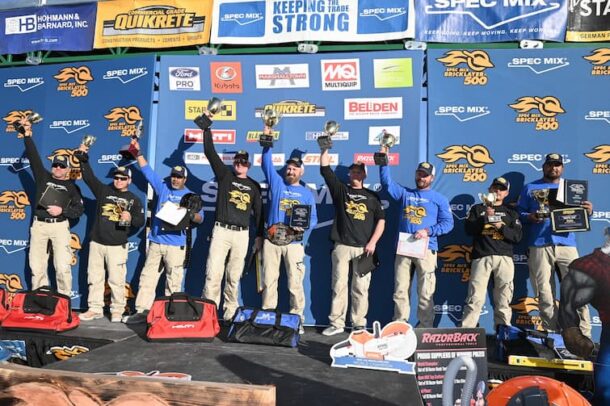
Conclusion
Attending the World of Concrete 2025 was a valuable experience, offering exposure to the latest industry innovations and fostering professional growth. The combination of educational sessions, product exhibitions, and networking opportunities provided a holistic view of the current and future state of the concrete and masonry sectors. For professionals committed to staying at the forefront of the industry, participation in WOC is highly recommended.
For more information on World of Concrete visit www.worldofconcrete.com.

By Heather Ripley ‘Tis the season to be charitable. The holiday season often brings out our country’s most benevolent feelings, but it’s also a great time of year to publicize your company’s charitable donations. Many news outlets tend to focus on what local businesses are doing for the community as an example of the Christmas Read more
By Heather Ripley
‘Tis the season to be charitable.
The holiday season often brings out our country’s most benevolent feelings, but it’s also a great time of year to publicize your company’s charitable donations. Many news outlets tend to focus on what local businesses are doing for the community as an example of the Christmas spirit or as part of a year-in-review story.
As a plumbing contractor, you are looking for ways to stand out from your competition, and one way to do that is to publicize your company’s volunteer spirit.
Studies also show that younger generations take a company’s charitable giving into account when making purchasing decisions, and all generations look favorably at successful companies that give back to their community.
Here are three reasons why sharing information about your company’s altruistic programs can help you stand out from the crowd and heighten your reputation.
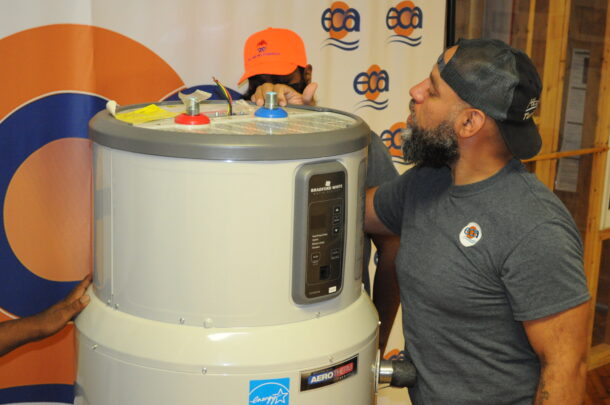
1. Attract Customers and Retain Talent
As a public relations professional, I speak to many business owners who feel like it’s self-serving to promote their own philanthropic efforts, but our agency highly recommends it, and here’s why: recent studies show that consumers want to know how businesses are supporting good causes. According to a YouGov poll, nearly half of consumers are more likely to buy from a brand that gives to a charity, while only 5% say they are less inclined to do so.
Given those odds, touting your efforts on your social media platforms, through press releases, and on your company’s blog will attract more customers who want to support businesses that care about the issues that are important to them.
In addition to consumer interest, most employees—65%—also prefer to work for companies that value social and environmental causes. Retention experts say that employees are happier when they work for a company that shares their personal values.
Collecting donations and offering volunteer opportunities boosts your employees’ morale and helps them connect with your company and its causes on a deeper level.
2. Boost Your Reputation
As a home service company, it’s imperative that you build trust in your community. Because you work with your customers in their most intimate settings, it’s important they have faith in your work and in your judgment.
By publicizing your philanthropic efforts, potential customers can see that you care. And, if your team also volunteers for activities to help the charities you’ve chosen to support, your company and its employees become more visible in the community.
This type of public relations (PR) associates your brand name with a cause and creates a positive image in the minds of consumers when they see your company name. A great example of this kind of PR is the Dawn Saves Wildlife campaign. As a result of news articles and an intense advertising campaign, people now associate the dish soap with the protection of wildlife after oil and chemical spills, and many consumers prefer to purchase that soap over others because they support the wildlife campaign.

3. Differentiate Your Company
If you’ve ever Googled your industry to see how many competitors you have in your local market, you are aware that you are probably one of several plumbing companies in your service area.
Most likely, their marketing teams are also producing door hangers, designing cool truck wraps, and are monitoring the Search Engine Optimization (SEO) on your website to attract customers. That’s why you need to do something to differentiate your company from your competition, and that “something” involves public relations.
If you have an effective PR partner, they can help you develop stories, social media and blog posts, and press releases about your company’s good deeds and will work to garner media interest in these efforts.
This not only gets you noticed by your local media, it also improves your standing on Google’s search results—the more times your company’s name appears in links outside of your website, the higher you’ll be listed in those results.
The bottom line is that you shouldn’t be afraid to showcase your philanthropic endeavors. But you need to do it tastefully. Building a solid PR campaign or working with a professional PR team can help you differentiate your company and celebrate your efforts while avoiding the pitfalls of sounding insincere.
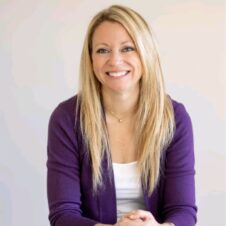 Heather Ripley is founder and CEO of Ripley PR, an elite, global public relations agency specializing in the franchising, skilled trades and B2B tech industries. Ripley PR has been listed by Entrepreneur Magazine as a Top Franchise PR Agency for seven consecutive years and was recently named as one of Newsweek’s America’s Best Public Relations Agencies for 2024. Heather Ripley was recently named as a 2024 PRNews Top Women honoree in the business entrepreneur category, and she was recently named as ACHR NEWS’ Top Women in HVAC. She is also the author of “NEXT LEVEL NOW: PR Secrets to Drive Explosive Growth for your Home Service Business,” which is now available on all audiobook platforms. For additional information, visit www.ripleypr.com.
Heather Ripley is founder and CEO of Ripley PR, an elite, global public relations agency specializing in the franchising, skilled trades and B2B tech industries. Ripley PR has been listed by Entrepreneur Magazine as a Top Franchise PR Agency for seven consecutive years and was recently named as one of Newsweek’s America’s Best Public Relations Agencies for 2024. Heather Ripley was recently named as a 2024 PRNews Top Women honoree in the business entrepreneur category, and she was recently named as ACHR NEWS’ Top Women in HVAC. She is also the author of “NEXT LEVEL NOW: PR Secrets to Drive Explosive Growth for your Home Service Business,” which is now available on all audiobook platforms. For additional information, visit www.ripleypr.com.
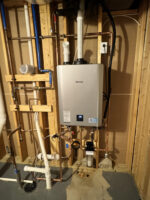
Homeowners, located in the heart of Illinois, moved into their house in May 2020. It was a new build that had sat as a community showcase home since being built in 2016. But there was one problem, in particular, the homeowners wrestled with on a daily basis. The 50-gallon tank water heater in the home Read more
Homeowners, located in the heart of Illinois, moved into their house in May 2020. It was a new build that had sat as a community showcase home since being built in 2016. But there was one problem, in particular, the homeowners wrestled with on a daily basis. The 50-gallon tank water heater in the home furnished water for a 3,500-sq.-ft home, yet more importantly, could not provide enough hot water to fill up the wife’s 120-gallon soaker tub.
The couple began researching tankless water heaters with a vengeance. Through much research and discussions, the search led to a Rinnai SENSEI™ RXP199iN condensing tankless water heater, a sleek and efficient alternative to the tank we had endured for years. The idea of endless hot water was tantalizing, but what truly sealed the deal was its energy efficiency. Unlike traditional water heaters that constantly keep a tank of water hot, the Rinnai system only heats water as needed. The environmental and financial savings were undeniable.
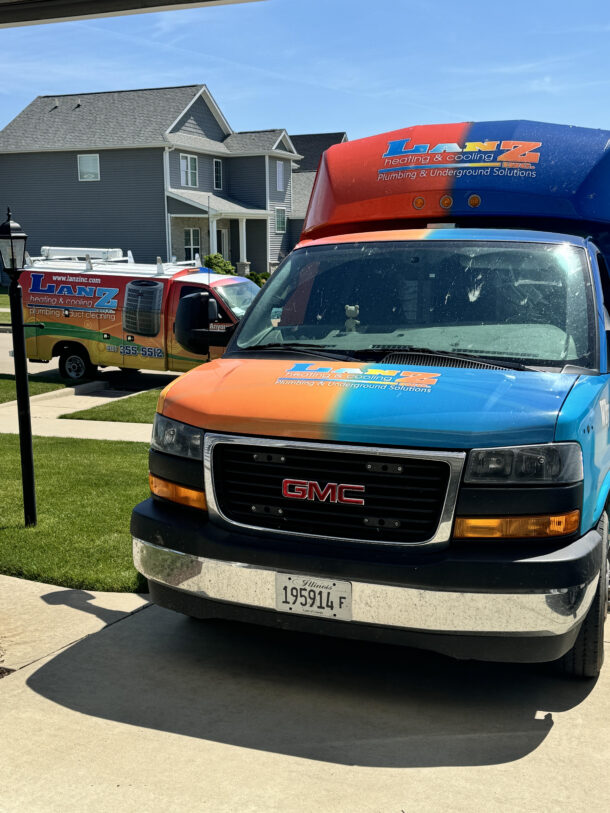
Early this fall, the homeowners hired a local team at Lanz Plumbing, who is a Rinnai Pro installer, to do the installation. Watching them work, they felt like they were witnessing the future unfold in their home. They removed the tank and installed the compact Rinnai Sensei unit on the wall in our basement utility room. It didn’t look like one of the really cool boiler or tankless projects they typically see on social media, but its size alone was a revelation—they gained an entire corner of usable space.
The first time the couple turned on the shower in the main upstairs bathroom after the installation was another revelation. The water flowed hot within seconds, steady and unrelenting. No longer did they need to wait up to a minute to get the hot water to the main bathroom. They tested its endurance by running multiple faucets, the washing machine, and even the dishwasher simultaneously. Not a flicker of cold interrupted the flow of hot water. It was as if they had discovered a hidden luxury they hadn’t realized they were missing.
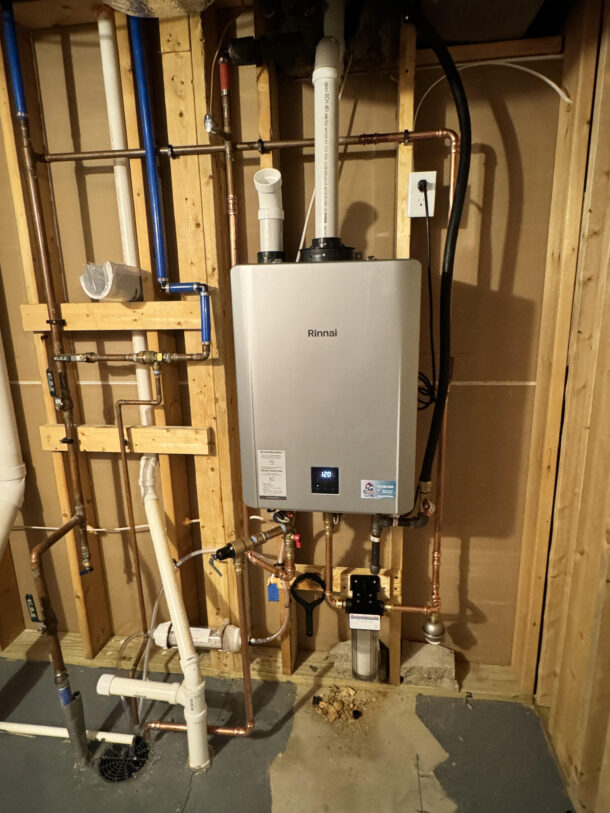
Beyond the convenience, the homeowners have started to notice the savings. The energy bill over the past two months, which had always spiked during the colder months, was noticeably lower. And as someone who takes pride in being environmentally conscious, the homeowner felt a sense of accomplishment knowing he was reducing his carbon footprint.
But the true moment of validation came the first weekend after installation. The wife, notorious for taking marathon showers and two-hour soaks, was finally able to enjoy a soak in 100-gallons of steamy hot water. They marveled at the endless hot water.
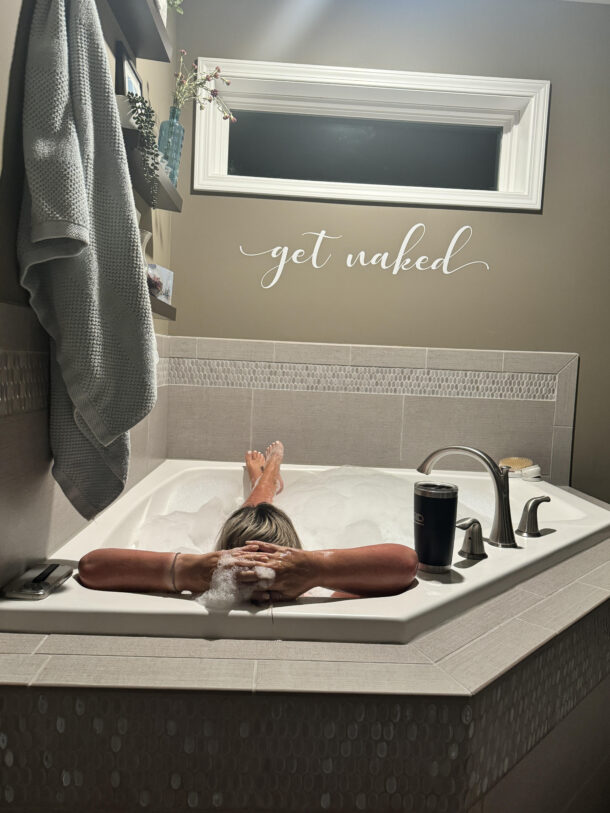
The Rinnai tankless water heater didn’t just upgrade the home; it transformed the couple’s daily routine and provided peace of mind. They no longer worry about running out of hot water or wasting energy. It was more than just a purchase—it was an investment in comfort, efficiency, and a better quality of life.

Although residential construction projects often focus on major living spaces such as the kitchen, other rooms — for example, the bathroom — are growing in prominence. People want to save money on their water consumption, and they do not want the change to result in poor water pressure. Instead, they are increasingly willing to pay Read more
Although residential construction projects often focus on major living spaces such as the kitchen, other rooms — for example, the bathroom — are growing in prominence. People want to save money on their water consumption, and they do not want the change to result in poor water pressure. Instead, they are increasingly willing to pay for the technology that allows them to enjoy greater comfort while minimizing the consequences of leaks and other plumbing problems. These popular bathroom design trends reflect the effects that plumbing innovations have had in the industry.
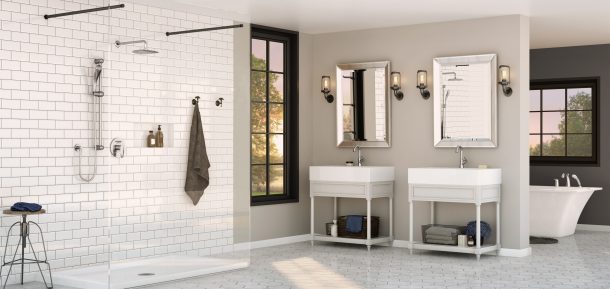
Smart Technology
The integration of smart technology has made plumbing a great way for homeowners to improve efficiency without compromising practical use. Modern plumbing systems rely on smart systems to track water usage and use sensors to identify leaks before they cause significant water damage. Smart technology and AI can integrate into every aspect of the plumbing system, from smart watering features in the backyard to smart toilets that can be flushed using a mobile device. With this technology, plumbers gain more information about the condition and function of the plumbing system, making problems easier to find and address.
Efficient Fixtures
Water-saving fixtures have become a standard in homes, with features that homeowners have come to expect. Low-flow showerheads and toilets have been available for decades, but the function of these fixtures has dramatically improved. Modern designs use a fraction of the water of older models, but they provide similar levels of water pressure. When combined with smart technology such as sensors, residents can avoid using water when they do not need it. Tankless or heat-pump water heaters round out the package, allowing homeowners to minimize energy consumption for water heating.

Water-Saving Plumbing
The conversation about water-saving features continues, expanding into the entire plumbing system. Homeowners pay for their water consumption, when much of the water they use ends up going back to the municipal water system almost immediately. The latest systems allow homeowners to maximize their use by conserving certain types of greywater. Plumbers can install a system that cycles water from certain drains to other parts of the home, for irrigation or other uses. Property owners can see their water consumption decrease, while growing their home’s overall sustainability.
Data Analytics
People no longer have to wonder about their water consumption or the function of their plumbing systems because data can readily provide that information. Many homeowners can now spot a leak using sensors that alert them to a sudden change in water consumption. This information can save thousands of dollars in expensive repairs, while minimizing stress on the local water supply. Plumbers can use AI to find patterns based on existing data to predict the likelihood of a leak and help guide homeowners in the best time to upgrade their plumbing.
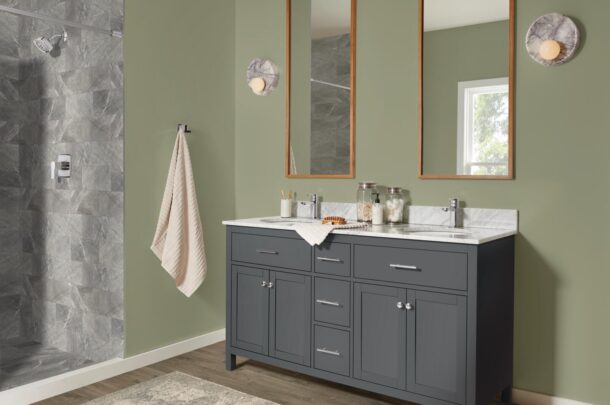
Chic Designs
Plumbing innovations are transforming the bathroom from a limited space to a true retreat. The separation of bathtub and shower has revolutionized the style and function of the bathroom. The bathtub becomes a place for rest and relaxation, featuring designs that become the statement piece of the bathroom. Without a bathtub, shower spaces can expand to meet the needs of the residents. The latest designs feature full-body showers, steam showers, soundproof ceiling installation in North Aurora, IL, and the technology homeowners need to control all of it with voice-activation or the touch of a button.
Homeowners may think more about their plumbing in recent years, which highlights the changes to the plumbing industry. Modern plumbing innovations allow homeowners to reduce their water consumption and maintain a closer watch on the condition of their plumbing. While these advances improve efficiency, they also give residents a comfortable, relaxing space while they rest from the cares of the day.
Brothers Dave and Jeff Dunaway are the Founders of Dunaway Brothers, which specializes in carpentry and decorating for commercial building projects throughout Chicagoland. Dunaway Brothers was founded in 2006 and also owns Sandwich Millworks, its residential branch, in Sugar Grove, IL. Sandwich Millworks specializes in custom millworks and is a Marvin certified window and door dealer.

By Chris Hondl, Nexstar Network Sales Coach Before I got into sales, I was a teacher. I taught for five years at the elementary level. My wife was also a teacher. At the time, we were newly married, with no kids, and looking ahead to how we were going to afford kids, buy a house Read more
By Chris Hondl, Nexstar Network Sales Coach
Before I got into sales, I was a teacher. I taught for five years at the elementary level. My wife was also a teacher. At the time, we were newly married, with no kids, and looking ahead to how we were going to afford kids, buy a house, and put together all the other pieces that come along with the American Dream.
Unfortunately, our two little teacher paychecks didn’t add up to making that happen. So, I took a stab at getting a second job. I had seen advertisements for the Minnesota School of Bartending and I decided to enroll, with hopes of teaching by day and bartending on nights and weekends. I went through the program and achieved the lifetime certification, which proved I had mastered how to make more than 100 of the most popular cocktails and knew about all the top brand-name liquors.
That was almost two decades ago, and I have yet to make a single drink as an official and employed bartender. In fact, if you were to ask me for any of those 100+ drinks I am “certified” to make, the only one I think I would be able to make you would be one of the simplest: a rum and coke.

You see, I never adopted my newfound bartending skills into practice. I learned the skills, but I never used what I learned afterward.
We see the same thing in our own businesses, don’t we? We send an employee to a session, and they gain all of these new skills and ideas, and then what? They come back to work. And if we don’t actively apply what your employees learned in the field, it’s eventually as if the session never happened. What a waste of time and money!
Recently, I asked the 40+ previous attendees of the Sales Objection Bootcamp about the effectiveness of the bootcamp.
The results I got back from the attendees, four months after the session occurred, generally fall into three buckets:
- We haven’t done a thing with the information we learned at the Sales Objection Bootcamp since we left, and we’re seeing the same results we were getting before the training.
- We realized we have some process issues to fix before we continue with what we learned in the Sales Objection Bootcamp.
- We are following the plan we learned and seeing amazing results!
These answers aren’t in the least bit surprising. It’s just like me and my experience with bartending school. Had I attended the school and then immediately gone out and begun bartending, the skills I had learned at school would have become second nature and helped me realize my goal of making money as a bartender. But since I never practiced what I learned, I ended up in the same place I was in before I attended bartending school: with no results, not retaining what I had learned, and not making money as a bartender.
Participating in the bootcamp is only half of the journey. Putting what you learn into practice is the other, more important half.
There are a lot of sales-focused training courses out there for our industry. Take time to identify the right one for you and your team. For example, the Sales Objection Bootcamp we’ve developed here at Nexstar is an intensive three-day session where your dedicated sales coach comes to your location and works with your team to master their presentations and objections such as: Price, Spouse, Shopping Around and many more.
Want proof that it all works? Here’s feedback from a member who is following the plan and currently seeing incredible results:
Nathan Andreas, owner of , attended Sales Objection Bootcamp with his sales team. Since returning home and practicing what they learned, their closing rate has gone well above their budgeted goal, with one salesperson averaging 69% closing on tech leads and 55% closing on marketed leads. Nathan says the take-aways that have been key to their success are:
- Buying into having a strong sales process before presentation
- Maximizing skills-practice
- Clarifying the objection
- Digging deeper to uncover the real objection
- Using a trial close prior to asking for the sale
- Riding along with his team
So! Are you ready to dramatically increase your sales in FY25? It will take commitment and follow-through. Otherwise, would you prefer to keep getting the same results you’ve always gotten?
 Chris Hondl serves as one of two Sales Coaches at Nexstar Network and has more than 15 years of experience in coaching, training, and sales. If you are a Nexstar member and are prepared to implement what you’ve learned in the Sales Objection Bootcamp, contact your Sales Coach for an assist. If you’re not a Nexstar member, but you’re curious to learn more, click here.
Chris Hondl serves as one of two Sales Coaches at Nexstar Network and has more than 15 years of experience in coaching, training, and sales. If you are a Nexstar member and are prepared to implement what you’ve learned in the Sales Objection Bootcamp, contact your Sales Coach for an assist. If you’re not a Nexstar member, but you’re curious to learn more, click here.
